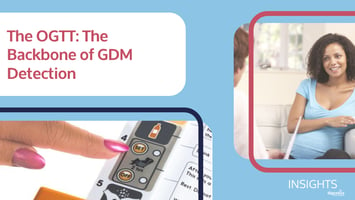Gestational diabetes mellitus (GDM) poses significant health risks for both mother and baby during...
Navigating Preanalytical Factors in the Oral Glucose Tolerance Test

Gestational diabetes mellitus (GDM), like many health conditions, is diagnosed by an individual undertaking a blood test. The gold standard test for GDM screening is the oral glucose tolerance test, frequently shortened to and known as the OGTT or GTT.
What does the OGTT measure and what are potential pre-analytical factors?
The OGTT is a fasting test that involves an initial blood test, immediate consumption of a glucose drink, and a second blood test after a two-hour interval of inactivity and continued fasting. The levels of blood glucose recorded at each test determine whether a positive or negative diagnosis is made.
However, while highly effective as a diagnostic tool, the OGTT can be negatively impacted by pre-analytical factors that could lead to incorrect results being obtained. For example, changes in the blood sample from when it's collected to when it's analysed in a laboratory. These changes, sometimes referred to as sample degradation, can affect the reliability of test results by either increasing or decreasing the concentration of glucose in the sample.
What is glycolysis and its significance as a pre-analytical factor?
Glycolysis is the process that occurs naturally in the body's cells, where glucose is broken down to produce energy. However, when blood is drawn for testing in the OGTT, glycolysis doesn't stop. Instead, it continues, leading to a decrease in glucose levels in the sample over time. Glycolysis is also accelerated by samples resting at room temperature.
How can we ensure OGTTs are conducted correctly to mitigate the impact of glycolysis?
Effective mitigation of glycolysis is typically achieved by analysing the samples immediately on their withdrawal (i.e. by having the analyser in the same room as the woman undergoing their OGTT). Alternatively, by immediately putting samples in an ice slurry, spinning them in a refrigerated centrifuge within 30 minutes then taking them directly to the laboratory for analysis. However, it is very difficult for hospitals to implement either of these methods in practice, particularly where testing is undertaken in the community.
Fortunately, the recent introduction of OGTT home testing means there is finally an innovative third way of screening for GDM, one that removes the risk of, and heavy lifting associated with, managing glycolysis in samples. GTT@home, developed by Digostics, not only enables patients to do their OGTT remotely (significantly improving test accessibility and uptake as exemplified by its implementation for gestational diabetes screening at University Hospital Southampton), but it also analyses samples immediately without the significant complexity and resource-intensive sample handling associated with the traditional clinic-based OGTT.
Summary
Understanding sample degradation underscores the importance of proper sample handling in medical testing. Every step matters, from the moment the blood is drawn to the time it's analysed. Healthcare providers must prioritise timely processing and adhere to standardised protocols to ensure accurate test results and optimal patient care. The good news is that new home testing technologies are making OGTT management much easier.
.png?width=50&name=Larger%20Headshot%20PSD%20for%20Individual%20Profile%20Pages%20(5).png)

.png?width=50&name=Headshot%20PSD%20-%20Circular%20(6).png)


Leave a Comment